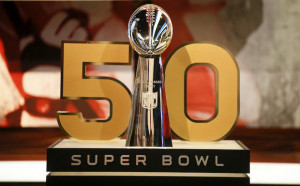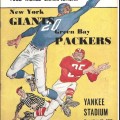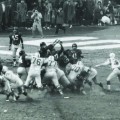By Victor Mastro
The Modern Era Since 1973
Pro football has not been played in the Bronx since 1973. Nevertheless, the Bronx continues to contribute to the sport. At the end of each season, the San Francisco 49ers give the Len Eshmont Award for inspiration and courageous play. Len Eshmont was a star halfback for Fordham in 1940 and a member of the original 49ers squad of 1946.
Another Fordham graduate, Wellington Mara, has owned and operated the Giants for decades, through good years and bad. Eugene Klein owned the San Diego Chargers for a number of years during the 1980’s. He once was a car salesman in the Bronx. Bill Polian, a Bronx native, is the general manager of the Buffalo Bills. His keen eye for talent has boosted the Bills to the top of the AFC. Fordham no longer has a nationally ranked football team, but the Rams still send an occasional player onto pro football. Kurt Sohn was a useful receiver and special teams player for the Jets from 1981 to 1988. Sam Bowers played tight end for the USFL New Jersey Generals from 1983 to 1985 and for the 1987 NFL Chicago Bears as a strike replacement.
As the Fordham football program improves, one can hope that another NFL player will soon again come off the Bronx campus…
Major African American Stars with Bronx Connections
Fritz Pollard coached the New York Brown Bombers from 1935 through 1938. The Brown Bombers played in Dyckman Oval, located in upper Manhattan, almost in the Bronx. In 1916, as a member of the Brown University team, Pollard was the first black player to play in the Rose Bowl and the first black player named to Walter Camp’s All-American team. He turned professional with the Akron Pros in 1919 and led that team to the APFA Championship in 1920. He played in the NFL through 1926. In 1954, he was elected to the College Football Hall of Fame. He has some support for election to the Pro Football Hall of Fame.
Buddy Young scored 13 touchdowns in his senior year at Illinois in 1944. He thus equaled a Big 10 Conference record set by Red Grange in 1924. Both Grange and Young played halfback for Illinois, then played professionally for the New York football Yankees in Yankee Stadium. Buddy Young was 5’7″ and 170 pounds, blessed with a sprinter’s speed and elusive moves. He was one of the pioneering black players in both the AAFC and the NFL in the post-war years. As a member of the 1952 Dallas Texans, he was the first black player on the Baltimore Colts. After his playing days, he served as NFL Director of Player Relations from 1964 to 1983. During the 1970’s and 1980’s, he also worked closely with Dom Preziosa, coach of DeWitt Clinton High School in the Bronx, in establishing scholarships and college programs for Bronx minority students.
Emlen Tunnell starred as a defensive back for the Giants between 1948 and 1958. During those years, he resided at the Concourse Plaza hotel, just up the street from Yankee Stadium. His 79 lifetime interceptions rank second in lifetime rankings. When Fordham grad Vince Lombardi became head coach of the Green Bay Packers in 1959, he brought Tunnell with him as a player and assistant coach. He was the NFL’s first black assistant coach. He returned to Yankee Stadium in the late 1960’s and early 1970’s as the defensive secondary coach. In 1967, he was elected to the Pro Football Hall of Fame, the first black player and the first defensive specialist to win that honor.
Calvin Hill starred at Riverdale Prep, a high school in the Bronx, in the 1960’s. After graduating from Yale, he had a productive pro career between 1969 and 1981. He was the NFL rookie of the year in 1969. He enjoyed 1,000 yard rushing seasons for the Dallas Cowboys in 1972 and 1973. In the 1972 playoffs, Hill was part of Dallas’ great 30-28 victory over the 49ers, with the Cowboys scoring 17 unanswered points in the fourth quarter. In 1986, the Cleveland Browns made Hill the director of the team’s drug abuse program. He remains a part of the Cleveland management.
Whenever a team wins the Super Bowl, it receives the Vince Lombardi Trophy, named after an illustrious product of the Fordham campus on Rose Hill in the Bronx. Everytime the Lombardi Outland trophy is awarded to the best college lineman of the season, another Bronx connection exists. When the Heisman Trophy is awarded to the best college player of the season, yet another Bronx connection exists. The model for the sturdy ball carrier on the trophy was Ed Smith, a halfback for NYU in the 1930’s, when that school had a major football team and a campus on University Heights, in the Bronx.
Editor’s Note: Victor Mastro is a football historian from the Bronx. His works are published In the Huntington Library (Westchester Square) and conducts lectures at various Bronx branches of the New York City Public Library and with various community organizations. Contact Mastro: Mastrovincenzo@aol.com

















Follow Us